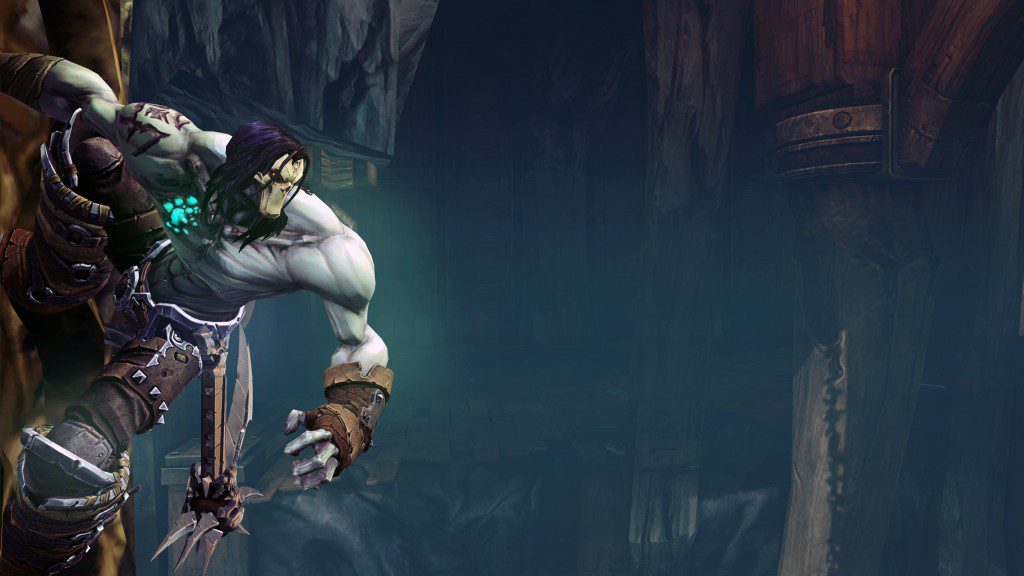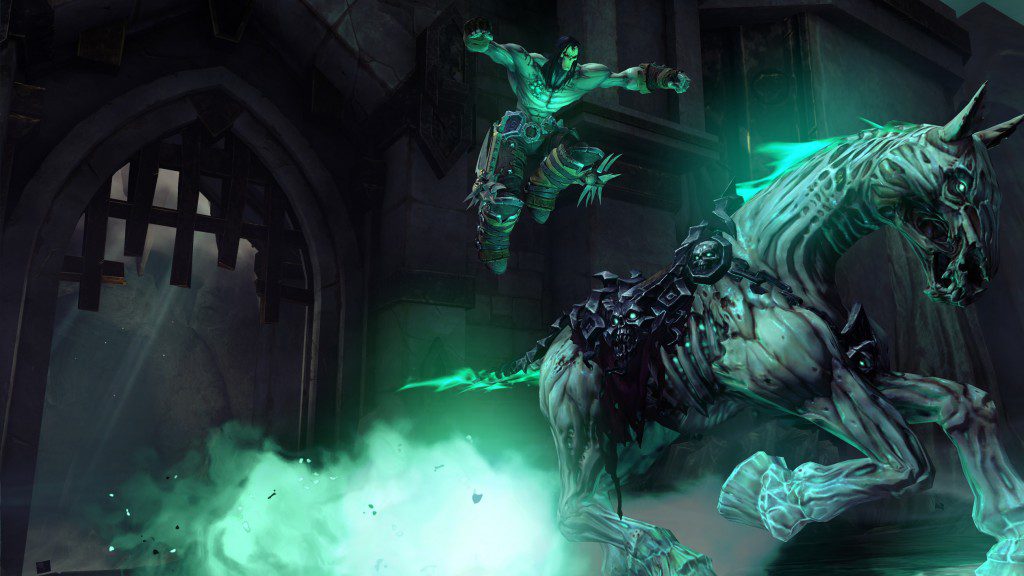When I reviewed Darksiders back in 2010, I was pleasantly surprised. As my memories of the game aged, what stuck with me was the untouched potential behind the game and the mythos surrounding it. The initial showings for Darksiders II did nothing to make me feel that there would be any dramatic improvement this time around, and while I held out hope that I might be surprised, my attention shifted to other upcoming titles. Well, I was able to sit down with Darksiders II for two full days, diving in to nearly every aspect of the game, and my every hesitation was promptly destroyed.
THQ and Vigil sat me down with the first two areas of the game, the much displayed “ice” level which featured the games tutorial, and the full world of the Makers, those brilliant giants with the Scottish brogues. Initially, the scope of Darksiders II seemed to be similar to its predecessor, until I was informed that this opening area was the size of the entire game world of the original, no small feat. It is obvious from the outset that Vigil found laurels a terrible place to rest, and each piece that followed proved just how ambitious they are.
Throughout the week I plan on tackling different portions of the game so I can give proper time to each improvement, and there are a lot of them. Thursday will be combat, Wednesday will be character customization, and today will cover traversing the game world itself.
Darksiders II manages to straddle a very fine line, retaining the feeling of a “Darksiders game” while completely subverting any expectations and reinventing itself continuously to maintain a firm difference between Death and War. The game world is mostly a wide open space now, and Death’s horse is along from the beginning to ferry you around it. Instead of looking big while funneling players through on a set path, Darksiders II opens up everything and drops you in to explore. Vigil took a different approach to exploration when building the world around Death, peppering caverns and dungeons seamlessly throughout the world, some accessible right away, and some simply tempting you with their potential. More than once I found myself in a “dungeon” without actually knowing it. They are blended into the world in such a way that game play is never interrupted. Each dungeon is so large and expansive that I never felt trapped or stifled. Typically dungeons and caverns are clearly delineated from the game world; see Skyrim for a perfect example. Vigil seems to have focused on making Darksiders II feel like one giant world instead of a corridor with a bunch of rooms attached. And the addition of fast travel both inside and outside of dungeons means that you are never trapped or stuck, you can simply pop out and come back later.
Navigating with Death is also vastly improved this time around. Where War was slow, lumbering and brutish, Death is lithe, quick and tricky. He runs faster, climbs quicker, and scales walls far differently than War. Wall running makes a comeback, but Death is able to parlay his runs into new ways of locomotion. He can leap between two facing walls, bounding up to seemingly unreachable areas. His momentum allows for him to propel himself farther as well. Death’s movements are akin to the original Prince of Persia, with new flairs and moves coming into play as you advance and gather new equipment, providing players with something new just before exploration becomes tedious. Vigil’s ideas and passion in crafting a consistently new experience, even in just the first dozen hours, makes a world of difference. Instead of showing a big world with limited options, they made sure that players had a daunting amount to explore and find, limiting us only by our equipment and ingenuity.
Tomorrow I will cover why Darksiders II might be the deepest action-RPG ever released.




